Studio visit with Laurs Kemp
Transforming forgotten secondhand garments into wardrobe statements

The first thing I notice about Laurs Kemp’s studio is the massive wood workbench that fills a decent portion of the room, sourced from a free pile, as one does in Portland, long ago when she had a studio in the John Deere building on SE Morrison. I don’t even want to ask how she got it into her apartment.
One evening in March, I joined a sewing workshop in Laurs’ home to learn a few tips directly from the experimental upcycle designer who’s lived in Portland for 12 years now. (Sometimes she calls herself a “post consumer designer” because, though a mouthful, it’s more accurate and sounds industrious.) In just a few hours as the early spring light dimmed, Laurs guided me through her techniques for applique—which appears in her work as bra pads, vintage gloves, puffy swirls, and hand-cut shapes sewn to button ups, blazers, and more.
Her specialty is taking vintage garments and turning them into treasures again, often with avant-garde, sculptural, and retro twists. White shirts become statement pieces, not just basics. Scrap fabrics become puffy belts and checkered pants. Tulle skirts are reworked into tulle dresses. Black loafers get hand-painted checkers. “As soon as it’s been cast aside, I want to find meaning and value,” she says. Every single piece receives her special care and attention.
Her one-off pieces can be found at Fine Art Fruit (next to The Yo Store, which, at one time, displayed an oversized pink, puffy bow made by Laurs). She’s teaching a workshop at Fine Art Fruit on 7/29, but you can also pick up her sewing wisdom through short tutorials shared on Instagram, YouTube, and Patreon.
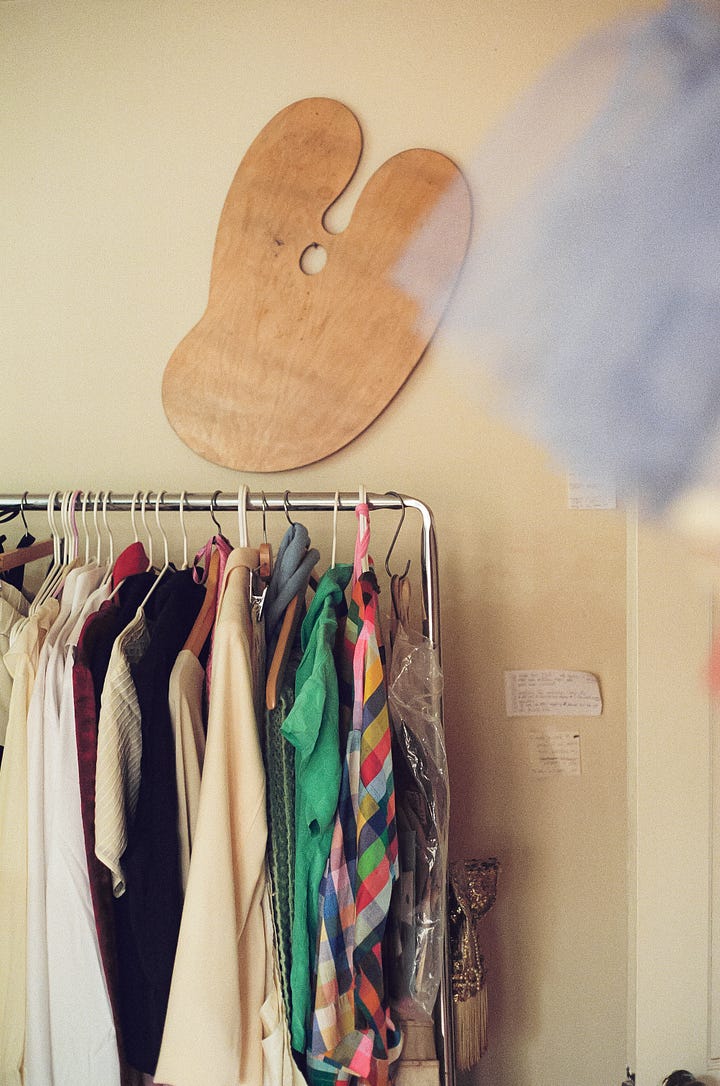

Let’s begin with when you learned to sew.
I’m from rural Arkansas and my mother is a retired home ec teacher. She always loved to sew and design clothes herself, so she taught me. My favorite activity as a kid was playing dress up. I had my little pile of antique, vintage items. I would drape a piece of fabric around me like, that’s a dress. It was very conceptual. Sometimes there would be one shoe without a mate and it was a point of inspiration. I remember one shoe so clearly. It was a beautiful silvery, dove gray suede with a T-strap. The strap was a leaf. I think it’s still in my room back home.
Then I went to the University of Arkansas Fayetteville, the famed fashion school (lol). I got my apparel studies degree there right on the cusp of selling things on the internet. Most of the things I learned became obsolete as soon as I graduated. But I got the barebones of it. Then I worked in corporate design at Dillard’s. I did some stuff on Etsy. I’ve always been drawn to antique malls. I loved vintage hats. If I find a stained top or a scrap of fabric, I anthropomorphize clothing that’s forgotten or unloved. If I just do this little tweak, someone will love it. I can see the potential in it; it’s a hidden gem. That sparked my interest in upcycling.
Artists have to straddle the line of creating and monetizing. How do you think about those two things, and how do they impact your creative practice?
I don’t make a ton of money doing this, and I think there are ways I could make more. I feel like at any moment there’s probably one change I could make to bring in more money. I’m sure it’ll come to me when I’m on my death bed. It’s on my mind a lot, but I don’t think it’s affecting the choices I make. It just comes back to social media. Capitalism plus algorithm equals not making money. It’s hard to know when an app is just going to go away or you’re gonna get hacked or kicked off. I wanted to make sure I had a newsletter and a Patreon that’s more community based in case my social media goes wrong. There’s not really a blueprint—everything is sort of the Wild West. There’ll be a day I make five sales, and I’ll be like, everything is going to be okay. And then there will be two weeks with no sales, and I’m like, I’m a flop. Right now, I’m diversifying my portfolio.
What does your creative frenzy look like?
In my studio space, I have to see almost everything or I’ll forget it exists. Object impermanence. Whatever babies have. If everything were in white boxes or in a closet, I would forget it existed in a very real way. I have to have everything in clear containers or see-through things. I hang things from the ceiling, too. Then I also need to have everything out, not just visible. It kind of depends what the project will be, but maybe I’ll start sorting by color or texture or shoulder pads for the bralettes. All the bits, the hardware. It was very messy in here before you guys arrived because I was in this creative stage. It’s like a big mood board, which is kind of fun. Of course I’m constantly reorganizing by color, by texture, by project.
Is there anything that blocks your creativity?
Even if it’s 9 AM, if I have something in the evening, I’m like, boy this day is a wash. I need a runway of 12 hours. I don’t know what it is. If I have something to do at 6 PM, I have to think about when I want to eat, when I want to get ready. It disrupts my flow. Of course, sometimes it’s good to have that.
Another thing: Several years ago, I would sew and not take breaks. I felt fine in the moment and then my back went out. After that, I started taking breaks seriously. Sometimes when I’m having fun, I don’t want to stop. I’m annoyed if I have to eat or pee or walk around or take a stretch break.
Since you’re the boss, how do you structure workdays?
It’s almost like I’m half working all the time rather than having a nice, healthy 8-hour workday. On an average day in the studio, when I’m not buying fabric or at a pop up, I get up at about 8 AM and have coffee. Maybe I’ll post something or figure out what I’m gonna do that day. If I have an urgent order, I’ll work on that and ship that out. If there’s light, I’ll take pictures. Then in the evening, I might still be doing some sewing or editing videos. While I’m sewing, I need to have either an audiobook or more likely a movie going in the background at all times, mostly from the ‘70s through the ‘90s, but occasionally the ‘30s, ‘40s, ‘50s.
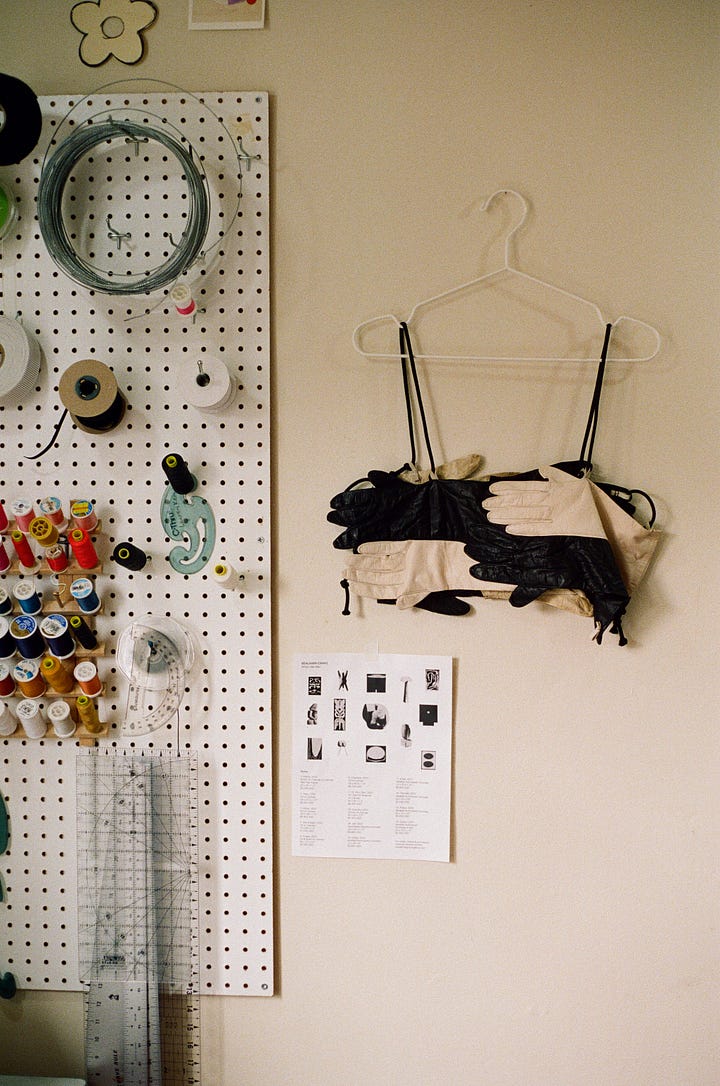
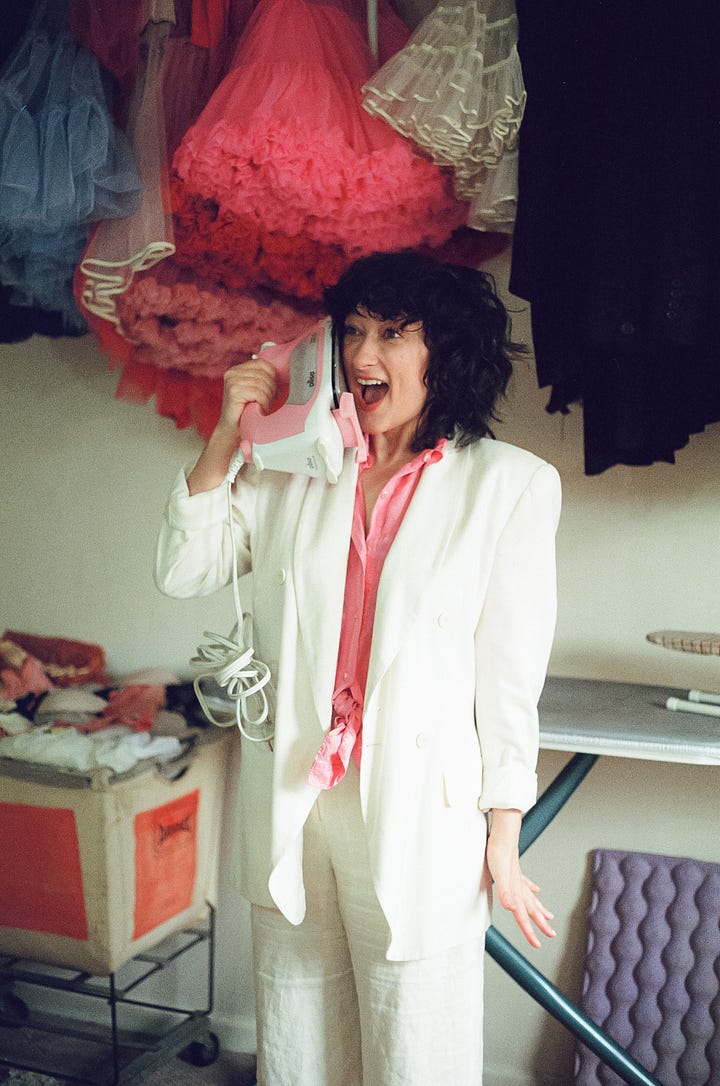
Favorite local fabric store: “Mill End Store”
Where you get supplies and notions: “WAWAK”
Latest finds: “I’ve been buying a lot of gloves and sewing them onto garments.”
Simple delight: “A little cocktail or a little sparkling wine, and sitting at the bar.”
Go-to drink order: “Sidecar; 1.5 oz cognac, 1 oz dry curaçao, 0.75 oz fresh lemon juice, dash of orange bitters, sugar rim, orange twist”
Movie you can watch 100 times: “Queens of Evil” (a 1970 horror film)
What determines if you’ll say “yes” or “no” to a project?
I’ve been trying this new thing. We’ve already established we don’t want to do things and we’re poor and we need to be charging more. Sometimes, if it’s a project that I’m not sure I’m qualified for, I’ll throw out a number. It isn’t high but for me it is. If they say no, then I’m right back where I started and I don’t have to do it. If they accept, then cool. It’s been a nice little change for me instead of always feeling like I have to say yes.
If you could design your ideal studio space, what would it look like?
Lots of light. Cement or wood floor. More space. In one sense, I like things being organized, but I also like a little bit of tasteful clutter. I would love to have a huge wall that can just be inspo. I’m very analogue and it’s hard for me to do any planning or calendar stuff on the phone. I’m not trying to sound like a quirky artist like, I can’t use a phone. But it doesn’t work for me. It’s like a closed drawer that I have to keep opening. Oh, and I’d have a color printer. One big white wall for taking photos. And then I guess sewing machines and clothing racks.
How do you think about sustainability when it comes to upcycling?
There’s so many materials already out there. If we stopped producing fabric today, there’d still be so much to work with. I think the limitations make it more exciting. You have to get more creative. It’s not a hindrance. If we solved all the problems around textile waste, I would still just want to dig around in the trash.
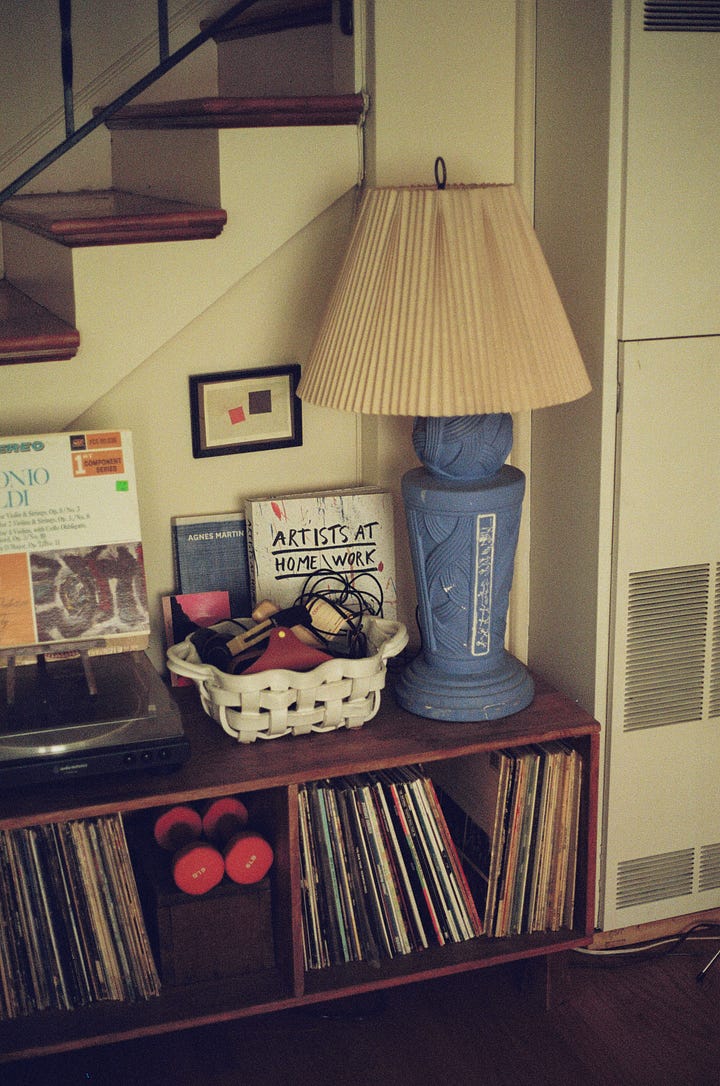
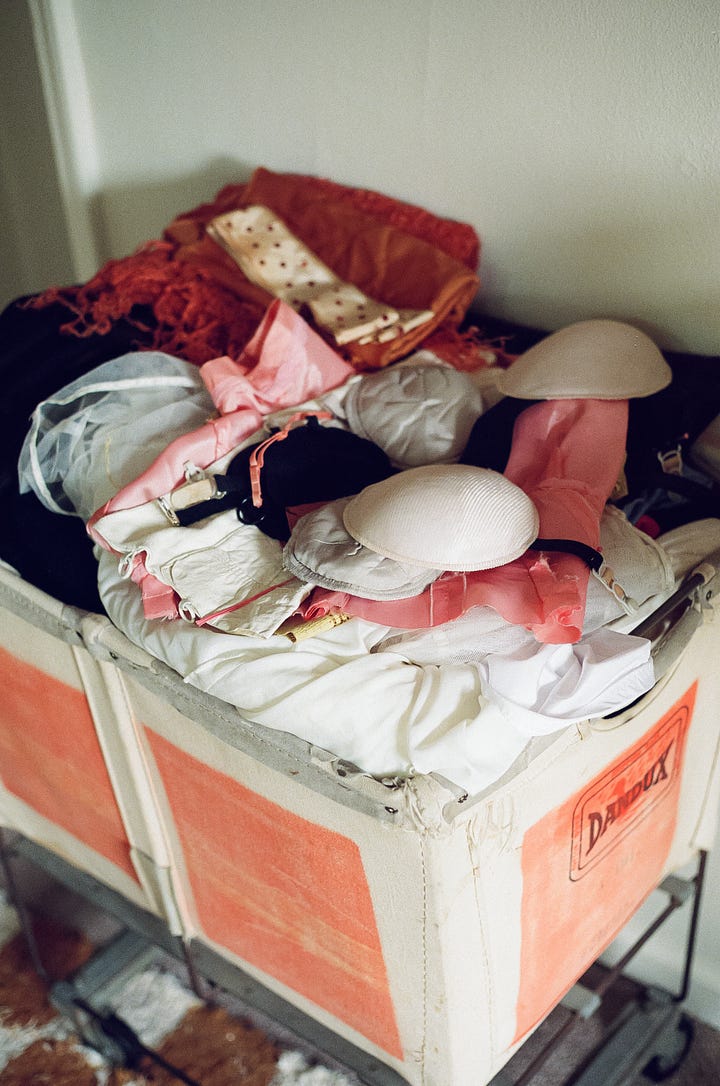
Amelia Arvesen (she/her) is the creator of Honing Her Craft and a freelance journalist who integrates her artistic side into her every day. The STUDIO VISITS series merges her curiosity as an interviewer with her admiration of creative practices and people.
Lauren Beane (she/her) is a freelance photographer specializing in film. She values a life centered around art, nature, community, and little pleasures. This series allows her to expand her definition of what it means to live a creative, artful life while providing others a window to do the same.





